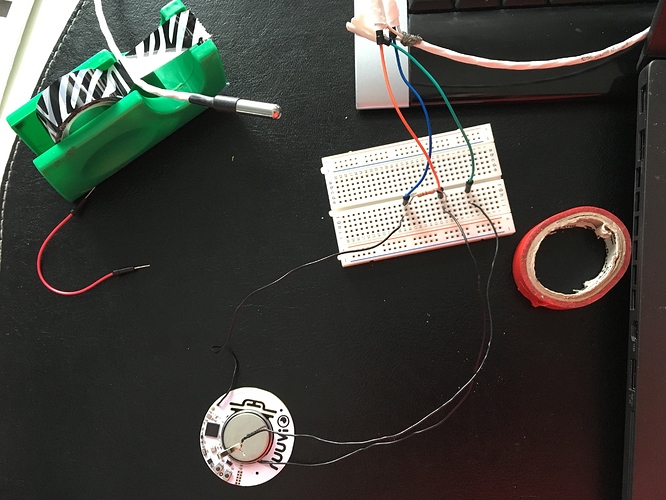Its possible to use external sensor with Ruuvitag, see attached image. We used DS18B20 temperature sensor and attached it to GPIO pin. I’m not even into electronics, but still I was able make required connections. Prototyping was easy with Espruino, code below
var ow = new OneWire(4);
device = ow.search()[0]; // search returns an array of device IDs
if (device===undefined)
print(“No OneWire devices found”);
else
print(“device:”+device);
print(“Getting temp”);
var sensor = require(“DS18B20”).connect(ow);
setInterval(function() {
console.log(sensor.getTemp());
}, 1000);
